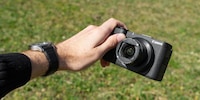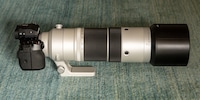

Canon EOS RP: the number two full-frame hybrid camera
Canon is introducing its second full-frame camera model, the EOS RP. And this year will also see the launch of six specially adapted lenses.
The wait hasn't been too long: just six months after the launch of the Canon EOS R, the Japanese manufacturer is at it again. The next full-frame camera is due for launch at the end of February. But because it's smaller and cheaper than the EOS R, it's bound to perform less well.

I've already dabbled a bit with this camera for the sake of comparison with the Canon EOS R. I'd like to briefly outline the main features of the new camera.
Features of the EOS RP
- 26 megapixels (EOS R: 30 megapixels) The sensor has the same resolution as the Canon EOS 6D II, it may even be the same
- Image processor: Digic 8 (as on the EOS R)
- 485 grams (EOS R: 580 grams)
- ISO 100-40,000 in automatic mode, expandable to 102,400 (as on the EOS R)
- Focus bracketing for macro photography (new)
- Continuous shooting, 5 fps speed with 4 fps AF tracking (EOS R: 8 or 5 fps)
- Swivel and flip-down touchscreen, approx. 1 MP (EOS R: approx. 2 MP)
- Viewfinder 2.36 million dots (EOS R: 3.69 million)
- Video: no Canon Log, 4K with 25 fps max, colour sampling (internal recording) 4:2:0, external 4:2:2
- Expected availability end of February
- Recommended retail price CHF 1549, around CHF 1000 less than the EOS R. If our actual price drops before the camera goes on sale, you'll get the cheaper deal.

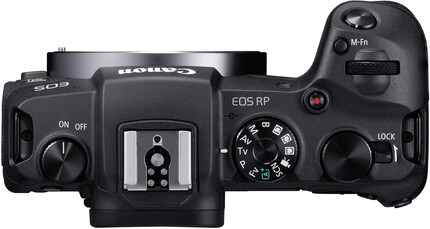
Differences in the controls compared to the EOS R
- No touch-bar
- No mode button, but mode selection wheel instead
- No second small screen
- Free configuration of controls as on the EOS R
Full technical specifications here.
Lenses that go on the attack
The range of lenses isn't very wide for the new interchangeable lens cameras. To give early adopters a rough idea of what they're getting into, Canon has announced which RF lenses will be released this year.
- RF 85mm F1.2L USM: fixed focal length over a medium telephoto range, suitable for portraits due to very high aperture.
- RF 85mm F1.2L USM DS: the initials DS stand for Defocus Smoothing. According to Canon, this unique and powerful portrait lens combines superb uniform foreground blur with background bokeh.
- RF 24-70mm F2.8L IS USM: standard zoom lens, the letter L indicates that it meets the needs of professionals. It will certainly be lighter, easier to handle and cheaper than the 28-70mm with Ff/2 aperture already available.
- RF 15-35mm F2.8L IS USM: this wide-angle lens is aimed at architecture, interior rooms and landscapes.
- RF 70-200mm F2.8L IS USM: according to Canon, a professional lens is suitable for wedding photography, sporting activities or wildlife at medium focal lengths.
- RF 24-240mm F4-6.3 IS US: compact universal lens for travel despite 10x zoom.
Canon thus covers all common areas of application. Unfortunately, there's no word on when the lens will hit the market, or what prices will be charged.
None of the six new lenses are available for the launch of the EOS RP. The kit therefore includes the 24-105mm and the lens mount for SLR cameras (EF system).
First impressions and classification
Here's what I noticed when I took my first photos with the EOS RP:
- the grip is much smaller than on the EOS R. Although my hands aren't very big, I find the one on the EOS R much more comfortable;
- the card slot is not on the side, but below the battery;
- the EOS RP has the same 4K crop as on the EOS R;
- unlike the EOS R, the sensor is not protected by a shutter, but is open when the lens is changed.
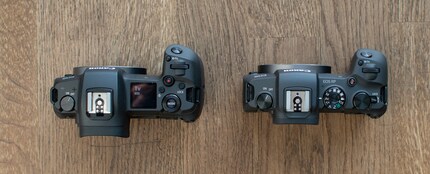
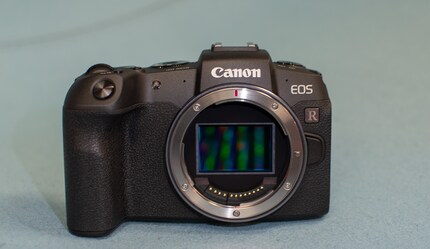
What I can say from the test is that the EOS R does well, without excelling in any particular area of application. Which is what I expected given the price. The situation is different with the EOS RP. For a brand new full-frame camera, the price is very attractive, but you shouldn't expect a technical revolution either. What's more, it seems pretty clear what the camera is best suited to: photographing more static patterns and macros. With focus stacking, the moving screen and the RF 35mm macro lens, you've got everything you need for close-up shots of very small subjects.
My interest in IT and writing landed me in tech journalism early on (2000). I want to know how we can use technology without being used. Outside of the office, I’m a keen musician who makes up for lacking talent with excessive enthusiasm.

